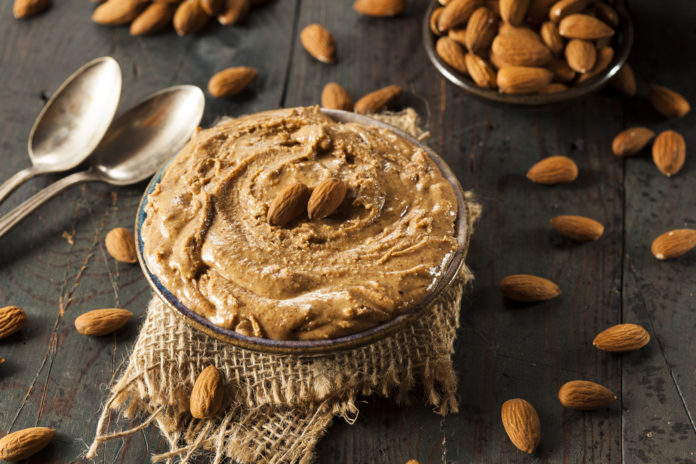Almond Butter Versus Peanut Butter: What’s the Difference?
Differences between peanut and almond better lies within their foundation, peanuts and almonds. Peanuts are a type of legume, members of the same plant family as beans and peas which grow underground, whereas almonds are tree nuts, growing on trees and closely related to other nuts such as cashews and walnuts. Each are ground into a “butter” to produce a smooth or chunky texture, with raw or roasted varieties solely available from almonds. Peanut butter tends to have a thicker, stickier texture while almond butter is mostly smoother and runnier. Despite textural differences, each are used to top onto toast, mixed into dips and sauces, or added to smoothies for added flavor, fat, and protein.
But from the spoonful, peanut and almond butter appear almost identical. And look at the Nutrition Facts label, they continue to resemble one another. In a nutshell, both peanut and almond butter supply approximately 190 calories, 7 grams of protein, 6 grams of carb, 16 grams of fat and 0 grams of cholesterol. When spooned a little deeper though, disparities are evident between peanut and almond butter nutrition. While nut butters are mostly filled with healthy fats, almond butter has the upper hand on a higher supply of monounsaturated fat. And when it comes to fiber, almond butter supplies a greater amount of 4 grams compared to peanut butters’ 2 grams. Almond butter is also a richer source of vitamin E, iron, magnesium, riboflavin, copper and calcium, though they both supply similar amounts of potassium, phosphorus, and zinc, vitamin B6, and folate.
Almond Butter Benefits
Sustained Energy
Almond butter may lead to sustained energy related to its dense caloric supply from fat, which causes a lengthier digestion rate and may lead to greater feelings of satiation. Additionally, magnesium plays an imperative role in an efficient metabolism, transforming calories from macronutrients into usable energy.
Diabetes Management
Interestingly, diets rich in healthy fats may manage type 2 diabetes. Moderated intake of almond butter, with or without a paired healthy carb source, may just in fact stabilize blood sugars and reduce the risk of dramatic spikes throughout the day.
Promotes Bowel Regularity
Almond butter generally doubles peanut butter’s supply of fiber. And considering its general pairing with fiber-filled breads, oats, apples and bananas, the combo shows great worth in reducing constipation risk.
Heart Healthy
Despite fat’s negative association to heart health, nut butter’s contribution of so-called “healthy” fats may fight against heart disease. Magnesium and potassium also contribute to normal heart muscle contraction and rhythms.
Bone Support
Almonds are an excellent source of bone-strengthening calcium. Especially if limiting milk and dairy products related to an intolerance or personal preference, almond butter is an alternative to gain calcium.
The Nutty Truth
Based on its nutritional profile, almond butter shows to be the healthiest option. However, both peanut and almond butter warrants themselves into a well-balanced diet and choosing ultimately comes down to taste preference and just how much you are willing to pay, as almond butter tends to come with a heftier price tag. It is also important to be cautious of potential peanut or tree nut allergies, as they may come in contact with one another during manufacturing and serving processes. Generally, allergists encourage individuals with a peanut allergy to avoid tree nuts, too. But when choosing any type of nut butter, select products without all the unnecessary additives, including various oils and added sugars, as the ingredient label should simply state the nut used and potentially a little salt.






